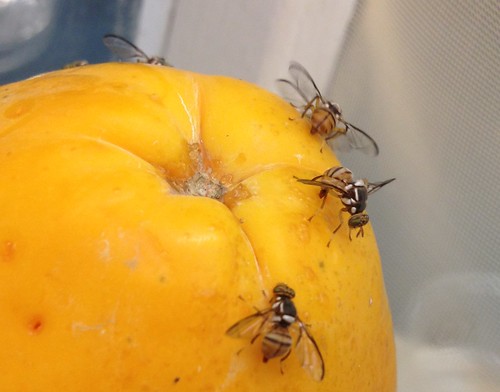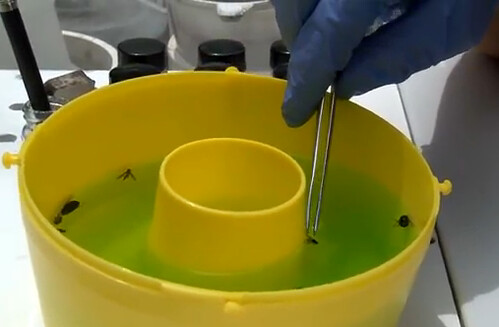
There’s a good reason why USDA and the Florida Department of Agriculture and Consumer Services (FDACS) constantly monitor more than 56,000 fruit fly traps they have strategically placed across Florida. An outbreak of exotic fruit flies—one of the most destructive pests of fruit and vegetables—could threaten Florida’s powerhouse agricultural industry. By detecting these pests early and responding rapidly, USDA, FDACS, county officials, and growers can avoid large-scale agricultural losses and keep valuable export markets open.
In August 2015, some of those traps captured Oriental fruit flies (OFF) in Miami-Dade County.
The OFF attacks more than 430 different fruits, vegetables, and nuts, including avocado, mango, guava, papaya, and pitaya. All of these crops and more grow in the county, which is Florida’s top producer of tropical fruit, tropical vegetables, and ornamental nurseries. The county’s $1.6 billion agricultural industry supports 11,000 jobs.
The detection triggered an emergency response that could be a case study in how USDA’s Plant Protection and Quarantine (PPQ) program and its partners respond to fruit fly outbreaks. Although responses vary depending on the fruit fly species, they all share a common framework, employing well-documented, science-based, and time-tested action plans:
- Quickly find the infestation’s boundaries by setting a delimiting area and monitoring additional traps in the affected area.
- Activate a team of government program experts, scientists, and state and local agriculture officials to assess the situation within the quarantined area.
- Conduct stakeholder meetings and enter into compliance agreements with every grower, harvester, processer, packer, shipper, wholesaler, and retailer in the quarantine area to ensure any potentially infested material is safe to move out of the area.
- Employ proven eradication strategies appropriate for the current infestation, such as removing fruit potentially infested with larvae and applying treatments to leaves and soil to eliminate the fruit fly population.
- Conduct public outreach through local PPQ offices, the state department of agriculture, Extension, master gardeners, local elected officials, and industry so the affected residents know about the quarantine and take action not to further spread the infestation.
- Continue surveying for three lifecycles after the last fruit fly is captured to verify eradication.
In areas at highest risk for Mediterranean or Mexican fruit flies, PPQ has another powerful tool: the release of billions of sterile male flies from airplanes annually. The sterile males suppress reproduction should any same-species wild female fruit flies enter the area (see the whole process in our “SIT - Florida’s Proactive Defense from Exotic Fruit Flies” video). If traps catch wild Mediterranean or Mexican fruit flies, PPQ may increase those sterile releases dramatically to help combat the infestation.
In the end, however, none of these strategies and tactics would work without PPQ’s strong state, local, and industry partnerships. Thanks to this close coordination in Florida, PPQ and FDACS declared OFF eradicated on Feb. 13, 2016, just six months after the first detection.
In 2015, the United States saw a record-setting 12 fruit fly infestations. Fortunately, we have eradicated 10 of them and are fast closing in on the others—because of proven strategies and effective partnerships.



